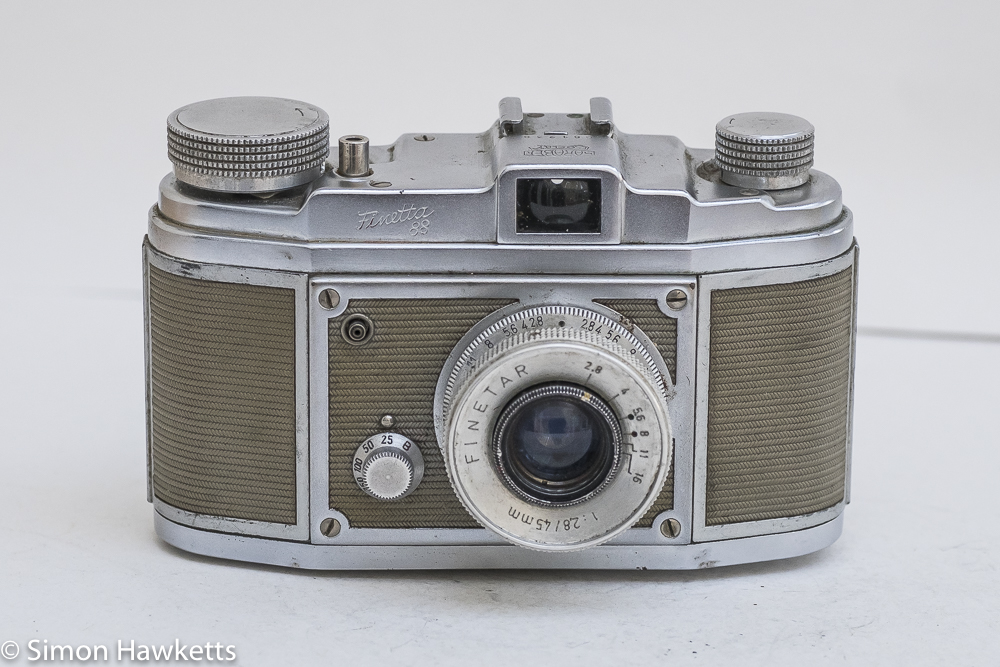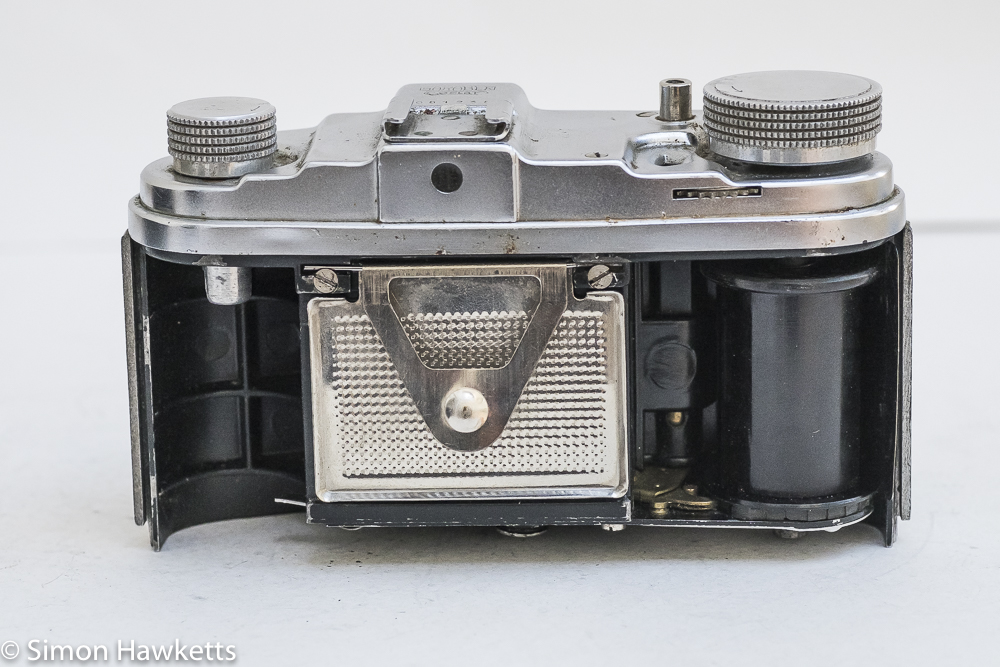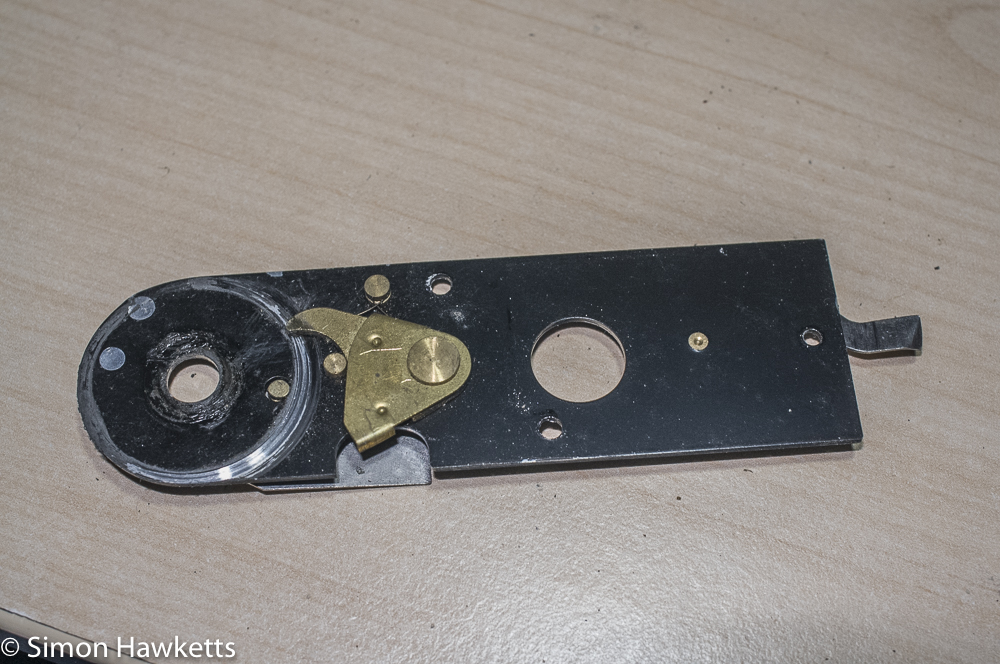Finetta 88 35 mm interchangeable lens viewfinder camera
The Finetta 88 is an attractive and interesting 35 mm viewfinder camera with an interchangeable lens, 4 shutter speeds and a lightweight, aluminium construction. It was made in the mid 1950s in Germany.
Finetta 88 Images






















My Finetta 88 Camera
I’ve seen these cameras appear on eBay reasonably frequently, but they always seem to be in a ‘buy it now’ sale and have a silly price tag. I’ve seen examples with prices up to £70 which just seems too much for a viewfinder camera, but I assumed they must be a excellent quality unit to command that sort of price.
I was therefore quite pleased when I found an example which had been discovered in an attic recently which was in a normal auction, and which I managed to buy for only £3-80.
When the camera was delivered I discovered that contrary to my initial assumption, it is not a fantastically well engineered camera but in fact it is a cheaply made unit constructed with thin plate and quite low spec materials. The construction methods remind me of cameras made by Franka and Wirgin. However, it is also about the easiest camera I’ve ever had for opening up and carrying out repairs.
As it happens, there were a few repairs I had to do and that involved basically stripping the camera down completely, but it was really quick and easy to do – the pictures above give some guidance as well as the notes below.
The problems I had with my example were that the shutter blades wouldn’t open at slow shutter speeds, and the mechanism which sets the shutter release ready to fire after an exposure was not working. There was also quite a bit of surface dirt and corrosion on the bright metalwork.
As I said above, dismantling the camera was remarkably easy. The film advance and rewind knobs are held on with small grub screws which undo and allow the knobs to pull off, although it took quite a bit of effort to remove them. The camera top then unscrews and lifts off, revealing an inner cover, which also unscrews and lifts off. Each of these pieces can then easily be cleaned.
The shutter is revealed by removing the four screws on the front plate and removing the shutter speed knob, which is held on with another grup screw. With the plate off, the shutter can be completely removed from the camera by unscrewing three screws and lifting it out. The action of the shutter is shown in the video below
To fix the shutter, I just needed to clean all the old grease from the shutter mechanism and refit it. The shutter release problem was also a question of cleaning, this time the mechanism under the film advance. I just released this mechanism by removing the three screws which held the bottom of the camera and taking the bottom off. At the same time, I cleaned all the old grease out of the film advance drum and used a small amount of lithium based grease in its place.
The only slightly tricky part of re-assembling the camera came with setting the shutter release distance. The shutter release is a three part assembly which screws together, and the distance needs to be set so that the shutter release correctly triggers the shutter and also correctly resets the shutter release when the film is advanced. Although it took a few attempts to get it right, it was only a question of making the adjustment and then a small amount of re-assembly to check it – all in all it only took about 10 minutes to get it right.
Finetta 88 Description
As I said in the opening paragraph, the Finetta 88 is a viewfinder camera with interchangeable lens, which is quite an unusual combination in my experience. Normally an interchangeable lens would imply some mechanism for accurate composition, and this camera has nothing which assists the photographer in the viewfinder – not lines or centre area marked. I assume the photographer just needed to get experience with the lenses they owned.
The lens mount itself is in keeping with the construction of the rest of the camera – quite simple and cheap.
It is a three-pronged bayonet, but there is no locking device – it is simply held in place by friction. Admittedly it seems quite effective because the lens, once fitted and turned, is very firmly held in place and not likely to fall off. I thought when I first saw it that it would be possible that the lens could be fitted with the focus marking in the wrong place, but the three prongs are arranged, so the lens only fits one way, so that can’t happen.
The focus is manual, and would need to be estimated or measured using an external rangefinder and transferred to the lens.
The aperture settings are made with a small ring on the inside of the front of the lens. On my example it is quite difficult to turn, but that may be a question of the lens needing a clean.
The shutter speeds are set using a knob on the front of the camera. The four speeds on offer are 1/250, 1/100, 1/50 & 1/25 and a bulb position is also offered. At the top of the front panel is a flash sync socket, although I don’t know if this is for bulb or electronic flash (I would suspect flash bulb).
To load the camera, the whole of the back panel is removed, and the film fitted to the rewind shaft and a small tinplate bracket is swung into place to hold the cartridge.
The film pressure plate is a simple affair with a spring-loaded clip which presses the film flat as the back is replaced. There are no toothed wheels to mate with the sprocket holes in the film, it is just pulled into place behind the lens. On my particular model, there is actually nothing to stop you winding the entire roll of film on to the film wind spool without taking a picture – I assume you just stop when the shutter release pops up. This could be a fault with my camera, of course – or they may be some other mechanism which comes into play when the film is loaded.
So all in all, as I said above, it is an interesting if somewhat poorly put together camera, but I think also quite an attractive beast!
Finetta 88 specification
- Finetta 88 35mm viewfinder camera
- Interchangeable lenses
- Friction bayonet mount
- Finetar 45mm f/2.8 lens
- Simple two blade shutter
- 4 speeds – 1/250, 1/100, 1/50, 1/25 + Bulb
- Flash sync socket
- Frame counter in top cover
- Very simple construction – easy to work on
- Ser No: 081238
- Camera wiki page here.
Discover more from Everything Vintage
Subscribe to get the latest posts sent to your email.






